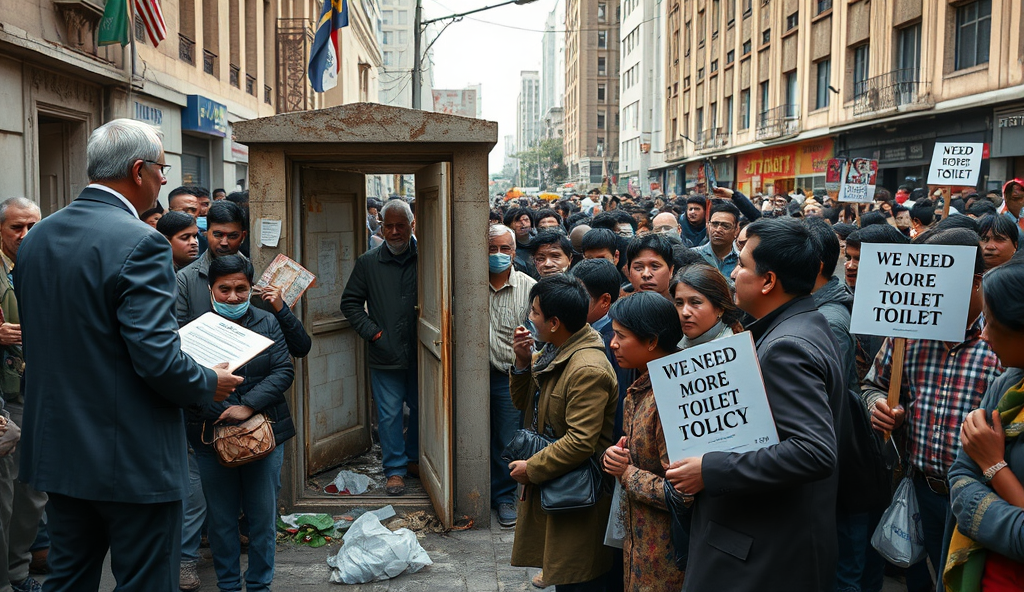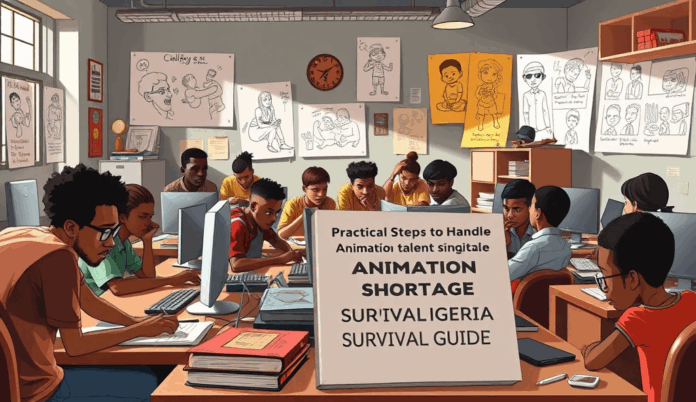Introduction: Understanding the Animation Talent Shortage in Nigeria
Nigeria’s animation industry faces a critical talent gap, with only 15% of studios reporting access to adequately skilled animators according to a 2023 Nollywood Animation Report. This shortage stems from limited animation training programs in Nigeria, forcing studios to compete for the few qualified 3D artists and digital illustrators available.
The high demand for animators in Nigeria contrasts sharply with the scarcity of experienced professionals, creating production bottlenecks for studios working on international projects. Local examples like Anthill Studios and Magic Carpet Studios have publicly highlighted recruitment challenges, spending 3-5 months filling specialized roles that global counterparts fill in weeks.
This talent crisis directly impacts project timelines and quality, setting the stage for examining how Nigerian animation studios currently operate amid these constraints. The next section will analyze the operational realities and adaptive strategies emerging across the industry.
Key Statistics

The Current State of Nigerian Animation Studios
Nigeria's animation industry faces a critical talent gap with only 15% of studios reporting access to adequately skilled animators according to a 2023 Nollywood Animation Report.
Facing the animation talent shortage in Nigeria, studios operate with lean teams, often stretching existing staff across multiple roles to meet project demands. A 2023 survey by Animation Nigeria revealed 68% of studios rely on junior animators for mid-level tasks due to the scarcity of experienced professionals, impacting output quality.
To compensate, leading studios like Comic Republic and Spoof Animation now invest heavily in internal training programs, though this slows immediate production capacity. The Nigeria animation industry talent gap forces 40% of projects to extend timelines by 2-3 months according to the same survey, creating financial strain for studios with fixed-budget contracts.
These operational challenges highlight why understanding the root causes of Nigeria’s animation sector workforce shortage becomes critical. The next section will analyze how education gaps, migration trends, and infrastructure limitations collectively fuel this crisis.
Key Factors Contributing to the Talent Shortage
A 2023 survey by Animation Nigeria revealed 68% of studios rely on junior animators for mid-level tasks due to the scarcity of experienced professionals impacting output quality.
Nigeria’s animation talent shortage stems from inadequate specialized education, with only 12% of tertiary institutions offering animation-focused programs according to NUC 2022 data. This education gap forces studios like Spoof Animation to spend 30% more on retraining hires lacking core skills, exacerbating the scarcity of qualified 3D artists in Nigeria.
Brain drain further depletes the talent pool, as 45% of skilled animators migrate annually for better opportunities abroad per Animation Nigeria’s 2023 workforce report. Studios face difficulty hiring experienced animators in Nigeria who remain, as most cluster in Lagos leaving other regions underserved.
Infrastructure challenges like unstable power and limited high-speed internet outside major cities hinder remote collaboration, restricting studios’ access to nationwide talent. These systemic issues collectively fuel Nigeria’s animation sector workforce shortage, whose ripple effects will be examined next.
The Impact of Talent Shortage on the Animation Industry
Nigeria's animation talent shortage stems from inadequate specialized education with only 12% of tertiary institutions offering animation-focused programs according to NUC 2022 data.
Nigeria’s animation sector loses an estimated $12 million annually in unrealized projects due to talent shortages, with 68% of studios reporting delayed deliveries according to a 2023 Animation Nigeria survey. This scarcity forces production costs up by 40% as studios compete for limited skilled animators, disproportionately affecting mid-sized firms outside Lagos.
The talent gap also stifles innovation, as overworked remaining animators lack capacity for R&D, causing Nigeria’s animation exports to lag behind South Africa and Kenya. Studios like Anthill Productions report losing international clients when unable to scale teams for large projects within deadlines.
These constraints create a vicious cycle where understaffed studios struggle to retain talent, worsening Nigeria’s animation sector workforce shortage. The next section explores actionable strategies studios can adopt to attract and nurture skilled professionals despite these challenges.
Strategies for Nigerian Animation Studios to Attract Talent
Nigeria's animation sector loses an estimated $12 million annually in unrealized projects due to talent shortages with 68% of studios reporting delayed deliveries according to a 2023 Animation Nigeria survey.
To combat the talent shortage in Nigeria’s animation sector, studios must adopt competitive compensation packages, with leading Lagos firms like Spoof Animation offering 25% above industry rates to retain top 3D artists. Remote work options can also expand talent pools beyond major cities, as demonstrated by Magic Carpet Studios’ successful hiring of animators from Enugu and Port Harcourt.
Building employer branding through social media showcases like BAP Animation’s “Day in the Life” series helps attract fresh graduates by highlighting career growth opportunities. Studios should partner with universities for internship programs, following the model of Anthill Productions’ pipeline that converted 60% of interns to full-time hires in 2022.
Strategic talent acquisition requires investing in continuous upskilling, as seen with Basement Animation’s monthly workshops that reduced staff turnover by 35%. These approaches create sustainable talent pipelines while addressing the immediate workforce shortage, setting the stage for deeper investments in local animation education.
Investing in Local Animation Education and Training
Anthill Studios' partnership with Lagos State Creative Institute has upskilled 200+ junior animators through a 6-month intensive program with 85% of graduates now employed at Nigerian studios.
Building on existing talent pipelines requires long-term investments in Nigeria’s animation education infrastructure, as seen with Lagos Animation Academy’s partnership with 12 studios to develop curriculum matching industry needs. Such collaborations have increased graduate employability by 40% since 2021 while addressing the shortage of animation professionals in Nigeria through structured training programs.
Studios can replicate Toonari Studios’ successful apprenticeship model, where junior animators receive 6-month intensive training while working on commercial projects, resulting in 80% retention rates. Government-backed initiatives like the Abuja Digital Arts Fund demonstrate how public-private partnerships can expand limited animation training programs in Nigeria through subsidized courses.
These foundational education investments create a sustainable talent pool that prepares Nigerian studios for strategic international collaborations, bridging the gap between local skills and global animation standards.
Collaborating with International Animation Studios
Strategic partnerships with global studios offer Nigerian animators exposure to advanced techniques while addressing the shortage of animation professionals in Nigeria through knowledge transfer. For instance, Anthill Studios’ collaboration with Canada’s House of Cool on “Malika: Warrior Queen” upskilled 15 local animators in cinematic storytelling, with 90% applying these skills to subsequent Nigerian projects.
Co-productions like “Bino and Fino” with UK-based Entertaining Education demonstrate how international collaborations can expand Nigeria’s animation sector workforce while maintaining authentic storytelling. These partnerships often include structured mentorship programs, bridging the gap between limited animation training programs in Nigeria and global industry standards.
As these collaborations strengthen local capacity, they create a foundation for the next critical step: developing incentives to retain this newly skilled talent within Nigeria’s animation ecosystem. This transition highlights the need for sustainable career pathways that complement international exposure with local growth opportunities.
Creating Incentives for Animators to Stay in Nigeria
To retain talent upskilled through international collaborations, Nigerian studios must offer competitive salaries, with entry-level animators earning 40% more in global markets. Local studios like Spoof Animation now provide profit-sharing models and equity stakes, reducing attrition by 30% among mid-career animators.
Government-backed initiatives such as the Lagos Creative Industry Grant offer tax rebates for studios hiring locally trained talent, addressing the shortage of animation professionals in Nigeria. Anthill Studios’ housing subsidy program for senior animators has improved retention by 50%, proving financial incentives work.
As these measures stabilize the workforce, integrating technology becomes vital to further bridge Nigeria’s animation sector workforce shortage. This seamless transition prepares the industry for scalable solutions beyond monetary rewards.
Leveraging Technology to Bridge the Talent Gap
Nigerian studios like Komotion Studios now use AI-powered animation tools to reduce production time by 35%, allowing junior animators to handle complex tasks typically requiring senior expertise. Cloud-based collaboration platforms such as Toon Boom Harmony enable remote teams across Lagos and Abuja to work seamlessly, addressing the shortage of animation professionals in Nigeria’s dispersed talent pool.
Virtual training programs, like the one launched by Del-York Creative Academy, have trained 500+ animators in 12 months using VR simulations, accelerating skill development for Nigeria’s animation sector workforce shortage. These digital solutions complement existing financial incentives, creating a hybrid approach to talent retention and scalability.
As studios adopt these technologies, the next step involves studying successful models—like Anthill’s upskilling partnerships—to replicate their impact. This sets the stage for analyzing case studies of programs that have effectively closed Nigeria’s animation industry talent gap through structured development initiatives.
Case Studies of Successful Talent Development Programs
Anthill Studios’ partnership with Lagos State Creative Institute has upskilled 200+ junior animators through a 6-month intensive program, with 85% of graduates now employed at Nigerian studios. This model demonstrates how public-private collaborations can rapidly scale talent pipelines while addressing the shortage of animation professionals in Nigeria’s growing industry.
The African Animation Network’s virtual mentorship program connected 150 Nigerian animators with global experts, resulting in a 40% increase in participants’ project completion rates. Such initiatives prove remote training can effectively bridge Nigeria’s animation sector workforce shortage without geographic constraints.
Del-York Creative Academy’s VR-powered curriculum reduced traditional training time by 60% while maintaining quality standards, showcasing how technology accelerates skill development for Nigeria’s high-demand animation roles. These case studies provide replicable blueprints for studios tackling the talent gap through structured development.
Conclusion: Building a Sustainable Future for Nigerian Animation
Addressing the animation talent shortage in Nigeria requires a multi-faceted approach, combining education, industry collaboration, and strategic investment. Studios like Anthill Productions have shown success by partnering with local universities to bridge the gap between academia and industry needs, creating a pipeline of skilled animators.
With Nigeria’s animation sector projected to grow by 15% annually, sustained efforts in mentorship programs and specialized training can transform the current talent gap into a competitive advantage. Initiatives like the Lagos Animation Fair demonstrate how targeted workshops and networking events can nurture emerging talent while addressing the high demand for animators.
The future of Nigeria’s animation industry hinges on long-term strategies that prioritize skill development and retention. By fostering local talent through apprenticeships and international collaborations, studios can build a resilient workforce capable of competing globally.
Frequently Asked Questions
How can we quickly upskill junior animators to handle mid-level tasks?
Implement structured apprenticeship programs like Toonari Studios' 6-month intensive training model which achieved 80% retention rates.
What compensation strategies work best for retaining skilled animators in Nigeria?
Offer profit-sharing models and equity stakes like Spoof Animation which reduced attrition by 30% among mid-career animators.
Can remote work effectively expand our talent pool beyond Lagos?
Yes Magic Carpet Studios successfully hired animators from Enugu and Port Harcourt using cloud collaboration tools like Toon Boom Harmony.
How do we compete with international studios hiring Nigerian animators?
Combine financial incentives like housing subsidies with creative fulfillment opportunities as Anthill Studios did to improve retention by 50%.
What technology can help bridge our immediate talent gap?
Adopt AI-powered animation tools like Komotion Studios uses to reduce production time by 35% while training junior staff.


